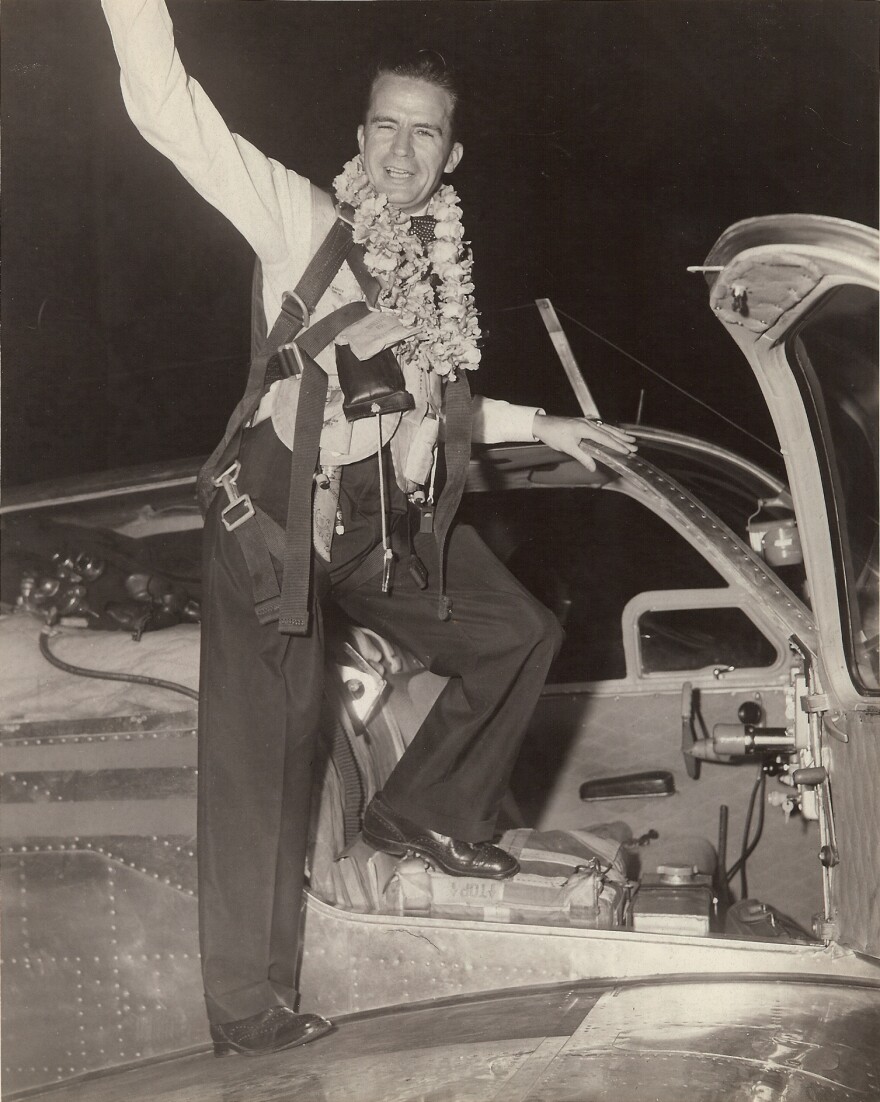For today's aviation commentary, Paul Glenshaw has an unlikely story. See if you can imagine this: a congressman risks his life for a self funded world peace mission. The Smithsonian loans an airplane from its collection for a solo round- the- world flight. A pilot makes that flight and does nothing to exploit his achievement. Yet, as Glenshaw tells us, all these things happened, in 1951, to one Peter Mack.
He was a 34-year old Democrat from rural Carlinville, Illinois. The former Navy flight instructor was in his second term as a Congressman when a constituent challenged him to do something about where the world was headed. World War II was very recent history. The Cold War had begun. Congressman Mack conceived a flight around the globe to present himself as a typical American wherever he landed, and simply spread good will.
Back in Washington, he shared the idea with Paul Garber, the curator of the Smithsonian’s National Air Museum. Garber made an extremely unusual offer. He had recently acquired The Waikiki Beach, a single-engine Beechcraft Bonanza, that in 1949 had been flown nonstop from Honolulu, Hawaii to Teterboro, New Jersey. Garber loaned the plane to Congressman Mack, on the stipulation that Mack pay to have it reconditioned.
As his constituent’s five and ten-dollar donations came in, Congressman Mack contributed $1500 of his own money, planned his route, and re-christened the plane Friendship Flame. On October 7, 1951, he took off from Springfield, Illinois on what he called the Abraham Lincoln Goodwill Tour.
After crossing the Atlantic, Congressman Mack toured Western Europe, Scandinavia, and the British Isles. He tried in vain to enter the Soviet Union. He flew through the Middle East, Iran, Pakistan, into South Asia, then Vietnam and Korea (where the war was in full swing), and finally Japan.
He handed out what he called “friendship scrolls.” He met with dignitaries and ordinary citizens, assuring everyone he met that the people of United States were interested only in peace.
The congressman made his way to Tokyo, and then out over the Pacific. After leaving Iwo Jima, a key instrument failed, called the artificial horizon. He had to find tiny Wake Island using substitute instruments. With fuel running low, the island finally emerged, and a greatly relieved Mack landed safely to refuel. He made two more stops before reaching San Francisco. It was the first solo transpacific crossing by an airplane—a major, and unnoticed, accomplishment.

Congressman Mack returned to Springfield on January 27, 1952—forty-five cities, thirty-five countries, and 33,000 miles later.
His family recently discovered a recording of the live radio broadcast of his landing.
Students from the Decatur Middle School presented him with a scrapbook. The newspaper clippings consistently refer to Congressman Mack as a “solon.” It is a word rarely used today. It means “wise lawgiver.”
Peter Mack served as a congressman until the early 1960s. The Freedom Flame was returned to the Smithsonian, where it is on display at the Steven F. Udvar-Hazy Center at Dulles International Airport.
Paul Glenshaw writes about aviation and space. Click here to read his article about solo transatlantic crossings, including this story.
Aviation programming on WYSO is supported in part by the National Aviation Heritage Alliance and The Air Force Museum Foundation.



